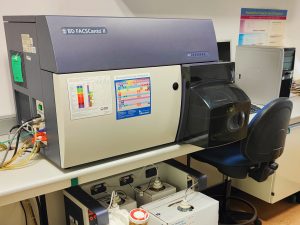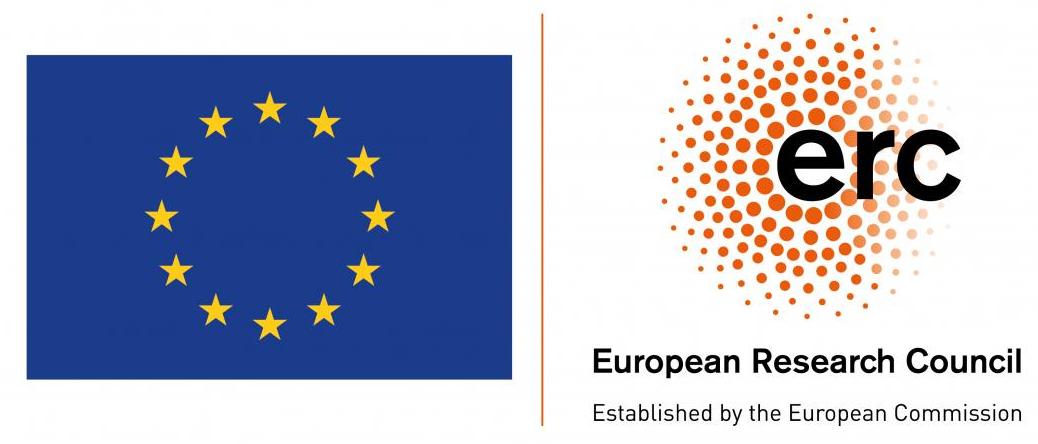BD FACSCANTO II

The FACSCanto II cytometer is a fluidics system coupled with advanced optics that allows for the characterization of cells/particles in suspension (recommended maximum particle size: 50 µm) according to their ability to scatter or emit light when exposed to light sources (lasers) at specific wavelengths. The resulting data is collected for multiple parameters for each individual cell at high speed (up to thousands of cells/particles per second). For example, the cell cycle, multiple immune cell populations and phenotypes or the expression of a fluorescent reporter can be assessed and quantified accurately for a large number of cells in minutes or even seconds.
The optical setup the FACSCanto II consists of three different lasers: 405 nm (violet), 488 nm (blue) and 633 nm (red). The fluorescence emission is filtered (see below) and then amplified by 8 photomultiplier tube detectors. Examples of fluorophores and fluorescent proteins suitable for studies using the following laser-filter combinations available in the FACSCanto II are indicated in brackets.
Wavelength ranges detected from 488-nm laser:
• 750-810 nm (e.g., PE-Cy7)
• 670-735 nm (PerPC-Cy5.5)
• 564-606 nm (PE)
• 515-545 nm (FITC, GFP)
Wavelength ranges detected from 633-nm laser:
• 750-810 nm (APC-Cy7)
• 650-670 nm (APC)
Wavelength ranges detected from 405-nm laser:
• 502-535 nm (AmCyan)
• 425-475 nm (DAPI, Pacific Blue ®)
Forward scatter detection: Photodiode with 488/10 bandpass filter
Side scatter detection: PMT with 488/10 bandpass filter
Common applications of this apparatus include:
- Detection of specific cellular antigens (surface, cytoplasmic, nuclear)
- Characterization of cellular DNA: cell proliferation, changes on the diploidy
- Functional state of cells: viability, apoptosis, necrosis, second messengers and free radicals production.
Contact: Lourdes Renart (e-mail: ; phone: +34 966658440).


